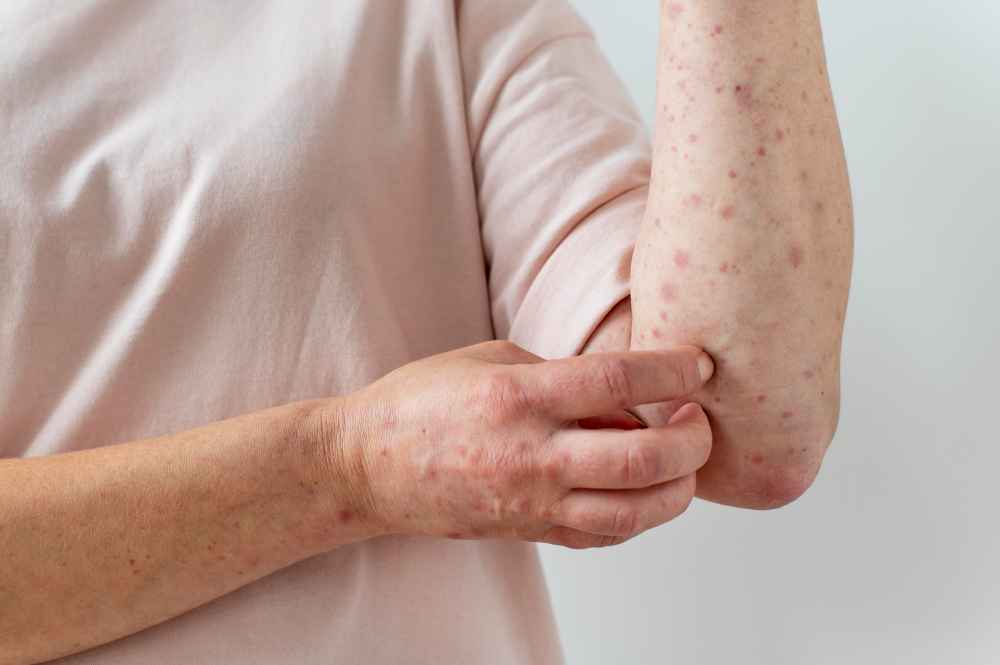
Learn about Lichen Nitidus, a rare skin condition marked by tiny, shiny bumps. Discover its symptoms..
Lichen Nitidus might sound like a complex term, but it’s actually a relatively simple skin condition that affects many people, often without them even realizing it. If you’ve noticed small, shiny bumps on your skin and wondered what they were, you might be dealing with Lichen Nitidus. This article will guide you through its symptoms, possible causes, and the treatments available to help manage it.
If you’ve ever spotted tiny, flat bumps on your skin, they may have been Lichen Nitidus. These bumps are usually shiny and smooth, with a distinct, somewhat translucent appearance. They’re often small—about the size of a pinhead—and can appear in clusters.
While it’s not always itchy, some people may experience mild discomfort or irritation. But don’t worry, it’s usually a harmless condition, even if it does seem persistent.
This brings a lot of relief for people who are concerned about the potential risks of skin conditions. So, no need to worry—it’s just an annoying but harmless skin issue!
Lichen Nitidus is commonly seen in children and young adults, though it can affect individuals at any age. If you’re younger, you might be more prone to developing this condition, but it’s not exclusive to any one age group.
While it’s not something that everyone gets, understanding who is most likely to develop it can help you keep an eye out for early signs.
So, what causes Lichen Nitidus? Well, it’s still not entirely clear. Scientists believe it might be related to an immune system response, but they don’t know for sure.
Some people develop Lichen Nitidus after skin trauma, which is known as the Koebner phenomenon. In simple terms, this means that skin injuries or irritation can trigger the appearance of Lichen Nitidus bumps.
Diagnosing Lichen Nitidus is relatively straightforward. If you notice the characteristic bumps on your skin, a dermatologist can typically identify the condition during a physical exam.
One of the best things about Lichen Nitidus is that it often resolves on its own. In many cases, the bumps will disappear within months to a couple of years without any treatment.
If you’re dealing with persistent bumps, don’t worry—there are several treatment options available. Let’s go over the most common ones:
Light Therapy (Phototherapy)
For widespread or stubborn cases, light therapy can be a useful treatment.
Oral Medications
In more extreme cases, oral medications may be prescribed. These may include antihistamines to reduce itching or immune-modulating drugs to help manage inflammation.
Most treatments focus on managing symptoms, as Lichen Nitidus tends to resolve itself with time. However, these options can help speed up the process if the condition is particularly bothersome.
If your symptoms seem to persist or worsen, it might be time to consult a dermatologist. A specialist can confirm whether it’s Lichen Nitidus or another skin condition.
Additionally, if the bumps spread rapidly or cause discomfort, getting professional advice will ensure you’re on the right track with treatment.
Remember, seeing a dermatologist is the best way to get the proper diagnosis and the most effective treatment options.
Conclusion:
In conclusion, Lichen Nitidus is generally a harmless skin condition that often resolves on its own. Though it can be concerning when first noticed, it’s typically non-contagious and non-dangerous. It’s also worth noting that there are ongoing atopic dermatitis clinical trials, which may offer promising insights and treatments for skin conditions like Lichen Nitidus. If you’re struggling with this or similar conditions, seeking medical advice can ensure you receive the best care available.
© 2024 Crivva - Business Promotion. All rights reserved.